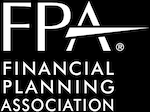The word “debt” conjures up negative feelings for most of us. Guilt for taking out loans for various reasons. Regret for putting too many frivolous purchases on credit cards. It’s true: debt can seriously hinder your financial future if you let it spiral out of control, but can also be a good thing.
Financial experts suggest a family’s total monthly long-term debt payments, including mortgage and credit cards, should not exceed 36% of its gross monthly income. That percentage point is actually one key factor mortgage bankers take into consideration when assessing potential borrowers.
So how do you decipher the difference between bad debt and good debt?
Bad Debt
Bad debt results from purchasing things (or trips) for trivial reasons that you don’t need and can’t afford. The most detrimental form debt comes from credit cards, since they usually carry the highest interest rates. Unfortunately, credit cards are also the easiest way to rack up debt, as they carry a “buy now, pay later” mentality.
Things we may think we will immediately pay off suddenly get put on the back burner when other more pressing financial needs (or wants) arise. New charges, coupled with interest continue to mount and suddenly your credit card bill has become a monstrous sum.
The average U.S. household with at least one credit card carries nearly a $15,950 in credit-card debt (in 2012), according to CreditCards.com, and personal bankruptcies have hit record highs in recent years.
The Baby Boomer generation seems to be particularly worried about their level of debt as they near retirement. In a 2014 Employee Benefit Research Institute survey, 44% of boomers reported that they were concerned about the size of their household debt.
Good Debt
Good debt includes necessities for which you don’t have the ability to pay up front without depleting your savings and/or liquidating all your investments.
A good debt has a long-term meaning behind it. For example, it’s usually a positive thing to acquire the debt in order to meet a life milestone that could improve your future, such as home ownership or a college degree. Even in these cases, however, it’s important to only take out loans for which you’ll be able to afford monthly payments.
A good debt also gives you long-term potential to earn money that exceeds the money you borrowed. There are some situations where even if you do have the cash upfront to pay for something, you may get a higher return by borrowing and investing the rest. For instance, if interest rates are low, it may make sense to take out a loan rather than paying cash, as the amount you would earn on your investment would be greater than your debt.
Examples of Good Debt:
1. Buying a home
Homes can appreciate in value over time and can prove to be profitable investments. There are several things to consider before taking the plunge into home ownership, however.
First evaluate your financial situation and decide how much you can afford as a down payment and how big of a loan you can handle. The more money you put down, the less you’ll owe in the long run, and the less interest you’ll pay as a result
But before liquidating investments and putting every spare penny toward a down payment, check with a financial professional to make sure it’s a wise move. Since mortgages tend to have lower interest rates than other debt, and you can deduct the interest you pay on the first $1 million of a mortgage loan, it’s smart to first pay off more high-interest loans. A professional can help you evaluate what percentage is best to put toward a down payment based on where you stand financially.
2. Investing in education
While a special account like a 529 Plan to help your children pay for their education is a good thing to have, liquidating other assets or borrowing against your retirement fund or mortgage in order to assist them with college is not.
Instead, encourage your kids to apply for scholarships, low-interest student loans and/or other financial assistance programs. You should also remember your 401(k) account won’t count as part of your income if your child applies for financial aid since retirement savings are not counted as available assets.
In particular, encourage your kids to apply for a government-backed Perkins or Stafford loan, which are based on financial need. These loans have guaranteed low rates; no interest payments are due until after graduation; and interest paid is tax-deductible under certain circumstances.
3. Financing a car
Most of us have heard about how a car’s value has a sharp decline as soon as you drive it off the lot. That’s why it’s smart to buy used most of the time, and put down the amount of money that makes sense for your financial situation (at least 10% is usually required). If you plan on driving the car for longer than you’ll pay the loan, borrowing may be the best choice.
A home equity loan is another option when buying a car because you’re likely to get a lower interest rate than you would on an auto loan, and the interest is tax-deductible. But before deciding on this option, evaluate whether you can afford the payments, as defaulting on the loan could result in losing your home. Also make sure you plan to keep the car for at least as long as you’re making the payments.
Leasing a car is also a possibility if you meet certain criteria. For example, if you won’t drive more than the 15,000 miles a year allowed in most leases, and you keep your vehicle in good condition to avoid end-of-lease penalties, it could be the right choice. Leasing a car will help you avoid a down payment, as well as have the opportunity to get a new car every three to four years.
Whatever route you decide to go, make sure you shop around in order to obtain the best interest rate, not just the lowest monthly payment.
Bottom line: It’s important to examine your financial situation sooner rather than later to determine if and how much debt is weighing you down. Consider working with a financial professional to create a plan to erase your bad debt and control your good debt so you can focus on the many other positive things life has to offer.






